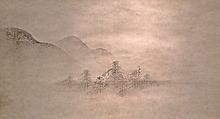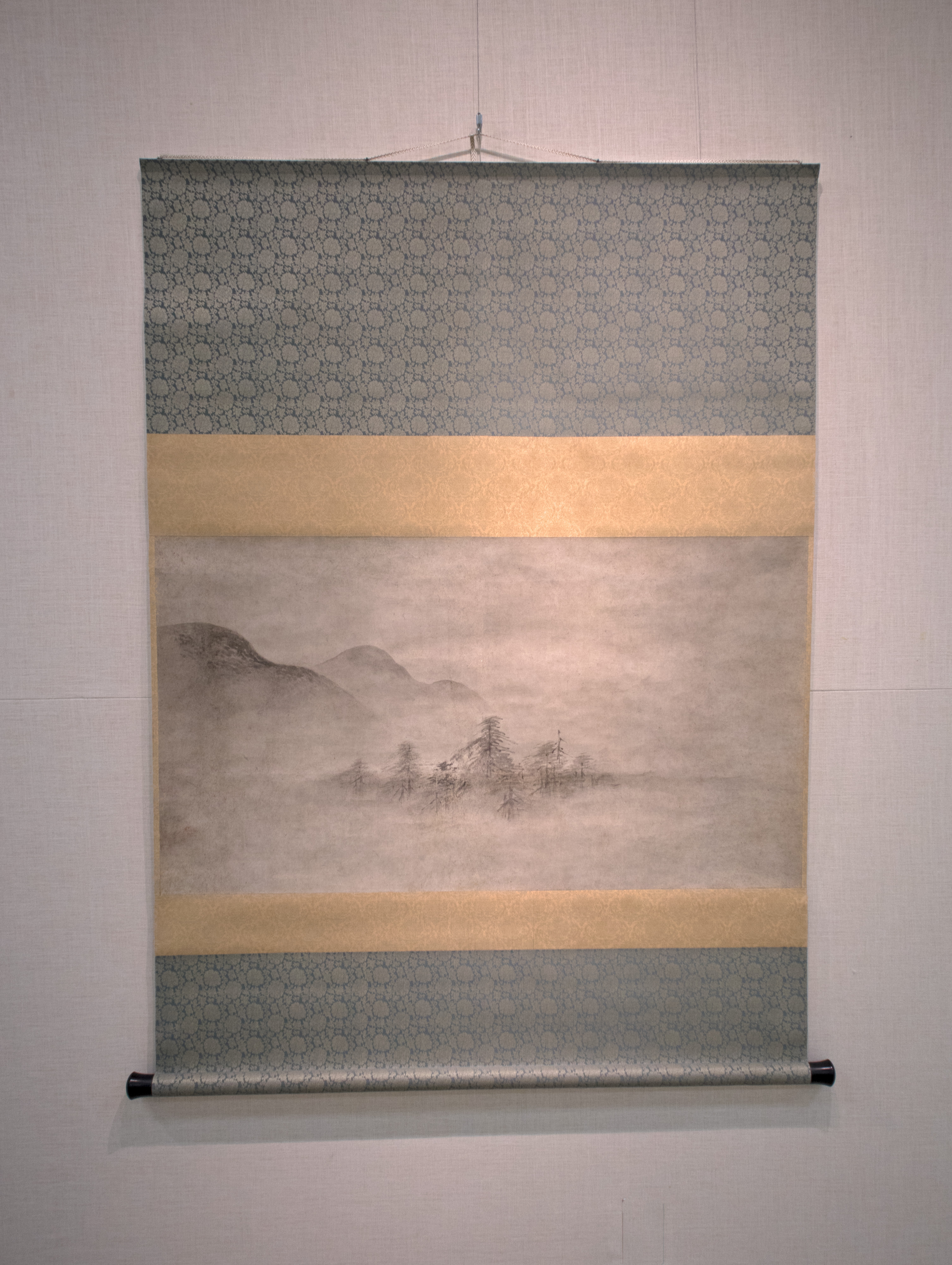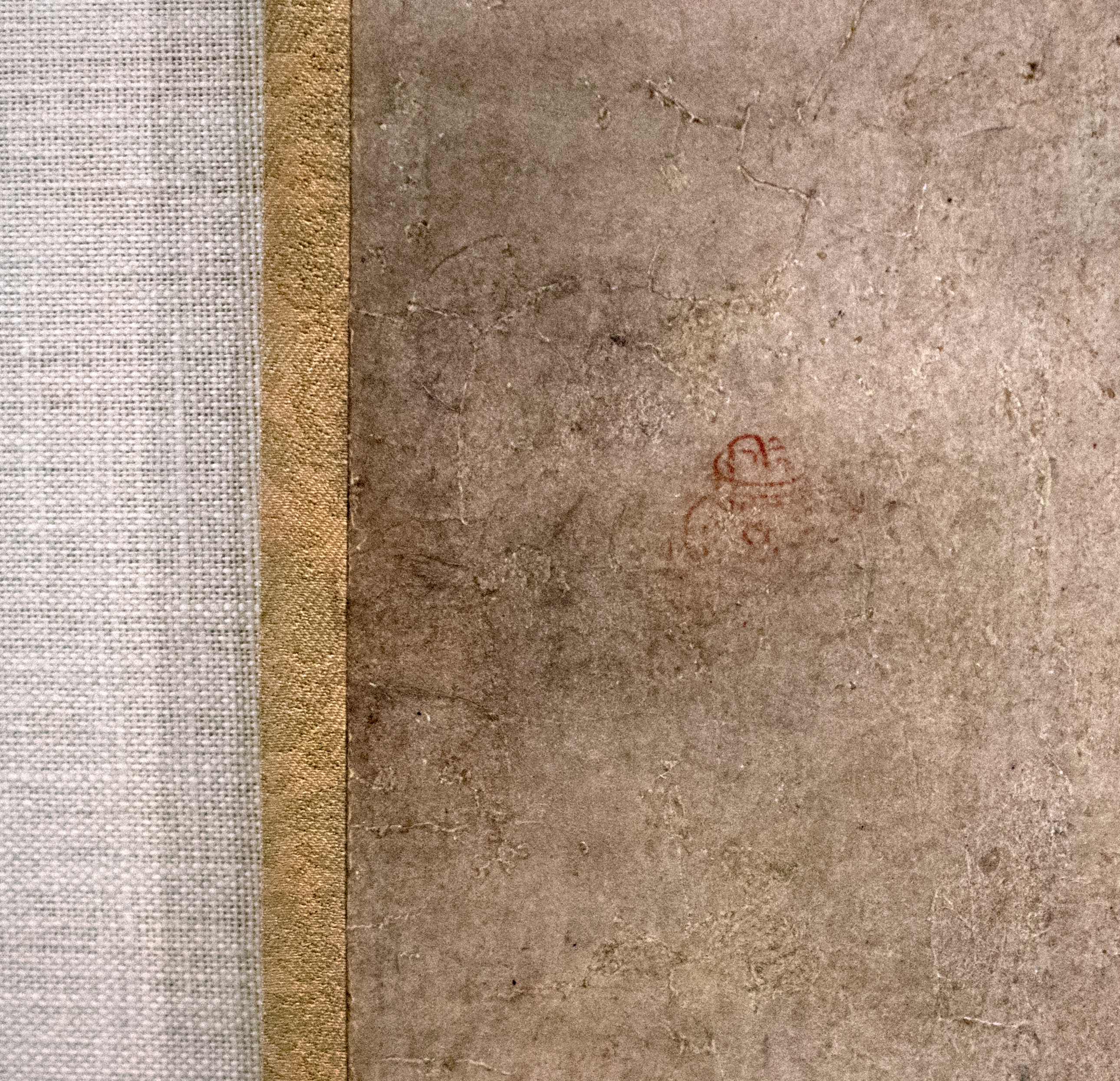Landscape
Attributed to Kano Motonobu Japanese
Not on view
This mist-shrouded pine grove where temple rooflines are faintly visible is a set motif that signals one scene, Evening Bell from the Distant Temple, from a classic series of landscape vignettes, Eight Views of the Xiao and Xiang Rivers, that developed among Chinese literati-artists in the eleventh century. It came to hold seminal importance in Japanese ink painting by the mid-fifteenth century, when no less than four versions of the subject were included among the Chinese paintings treasured by the Ashikaga shoguns. The impressionistic depiction in pale ink wash associates this depiction with the work of Muqi, a Chinese monk-painter active at the end of the thirteenth century in temples around the Southern Song capital at Hangzhou in southeast China. This poetic rendition of that landscape may have originally been part of a large composition that created an interior space on a sliding door panel or a folding screen. Its horizontal composition, however, recalls the original handscroll format of Muqi's work.
Due to rights restrictions, this image cannot be enlarged, viewed at full screen, or downloaded.
This artwork is meant to be viewed from right to left. Scroll left to view more.




